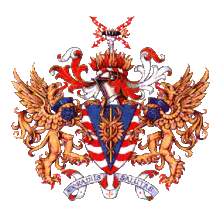Royal College of Radiologists

The Royal College of Radiologists (RCR) is the professional body responsible for the specialty of clinical oncology and clinical radiology throughout the United Kingdom. Its role is to advance the science and practice of radiology and oncology, further public education and set appropriate professional standards of practice. The College also sets and monitors the educational curriculum for those training to enter the profession. It is a registered charity in the United Kingdom (no. 211540).[1]
The College publishes two journals, the Clinical Oncology Journal and the Clinical Radiology Journal, as well as awarding various prizes and scholarships.
History
A series of bodies has represented practitioners of radiological medicine in the UK, starting in 1897 with the foundation of the Roentgen Society (named for the physicist Wilhelm Conrad Röntgen). Subsequently founded societies included the British Association of Radiologists (1934), the Society of Radiotherapists of Great Britain and Northern Ireland (1935) and the Faculty of Radiologists (1939).
In 1950 the first issue of the Clinical Radiology Journal was published by the Faculty of Radiologists, who were then granted a Royal Charter of incorporation in 1953. Professor Sir Brian Windeyer helped found and became President of the Faculty of Radiologists from 1949-52.[2] A supplemental charter was given in 1975 to rename the Faculty as The Royal College of Radiologists. The College then published the first issue of the Clinical Oncology Journal in September 1989.
Fellowship of Royal College of Radiologist Examinations
The fellowship examinations start at the beginning of the Specialty Training Year 1 (ST1). The First FRCR examination expects candidates to have gained a knowledge of the physical principles that underpin diagnostic medical imaging and of the anatomy needed to perform and interpret radiological studies.[3][4]
The First FRCR examination comprises two modules:
Module 1: Anatomy
Module 2: Physics.
The specialty trainees are expected to complete their First FRCR examination before progressing to ST2. During their training of ST2 to ST3, they must complete their FRCR Final Part A before progressing to ST4.[3]
The current structure of FRCR Final Part A consists of six modules -
Module 1: Cardiothoracic and Vascular
Module 2: Musculoskeletal and Trauma
Module 3: Gastro-intestinal
Module 4: Genito-urinary, Adrenal, Obstetrics & Gynaecology and Breast
Module 5: Paediatric
Module 6: Central Nervous and Head & Neck
However, The GMC have given RCR approval in principal for a significant change to the Final FRCR (Part A) examination, which UK trainees and trainers were initially informed of in February 2016. In 2018, the examination will revert from the current six-module structure to a single examination - this change will affect trainees who started in ST1 in or around September 2015.[5]
During the ST4 training, the specialty trainees are expected to complete the Final FRCR Part B. The Final FRCR (Part B) examination consists of a reporting session, a rapid reporting session and an oral examination.[6]
The extensive examination provided by the RCR ensures a high quality and standard of radiology consultants. It has been deemed as one of the hardest examinations in the medical profession, along with the FRCA and FRCPath.
List of Fellows
- Moya Cole
- Adrian Dixon
- Frank Ellis
- Janet Husband
- M. Krishnan Nair
- James Ralston Kennedy Paterson
- Kakarla Subba Rao
- Sanjay Gandhi
- Robert Twycross
- Dr. K.A. Dinshaw
See also
References
- ↑ UK Charity Commission
- ↑ Windeyer - history of a building, accessed 23 March 2013
- 1 2 "Final FRCR Part A Examination | The Royal College Of Radiologists". www.rcr.ac.uk. Retrieved 2016-08-28.
- ↑ "FRCR Exams". Radiologically. Retrieved 2016-08-28.
- ↑ "RCR new exam structure" (PDF).
- ↑ "Final FRCR Part B Examination | The Royal College Of Radiologists". www.rcr.ac.uk. Retrieved 2016-08-28.
External links
- Royal College of Radiologists official website
- Academic Clinical Oncology & Radiobiology Research Network An NCRI initiative to revitalise radiotherapy research in the UK. Website has an active community of RCR radiologists working on research projects and also has details of training courses and opportunities for radiologists.